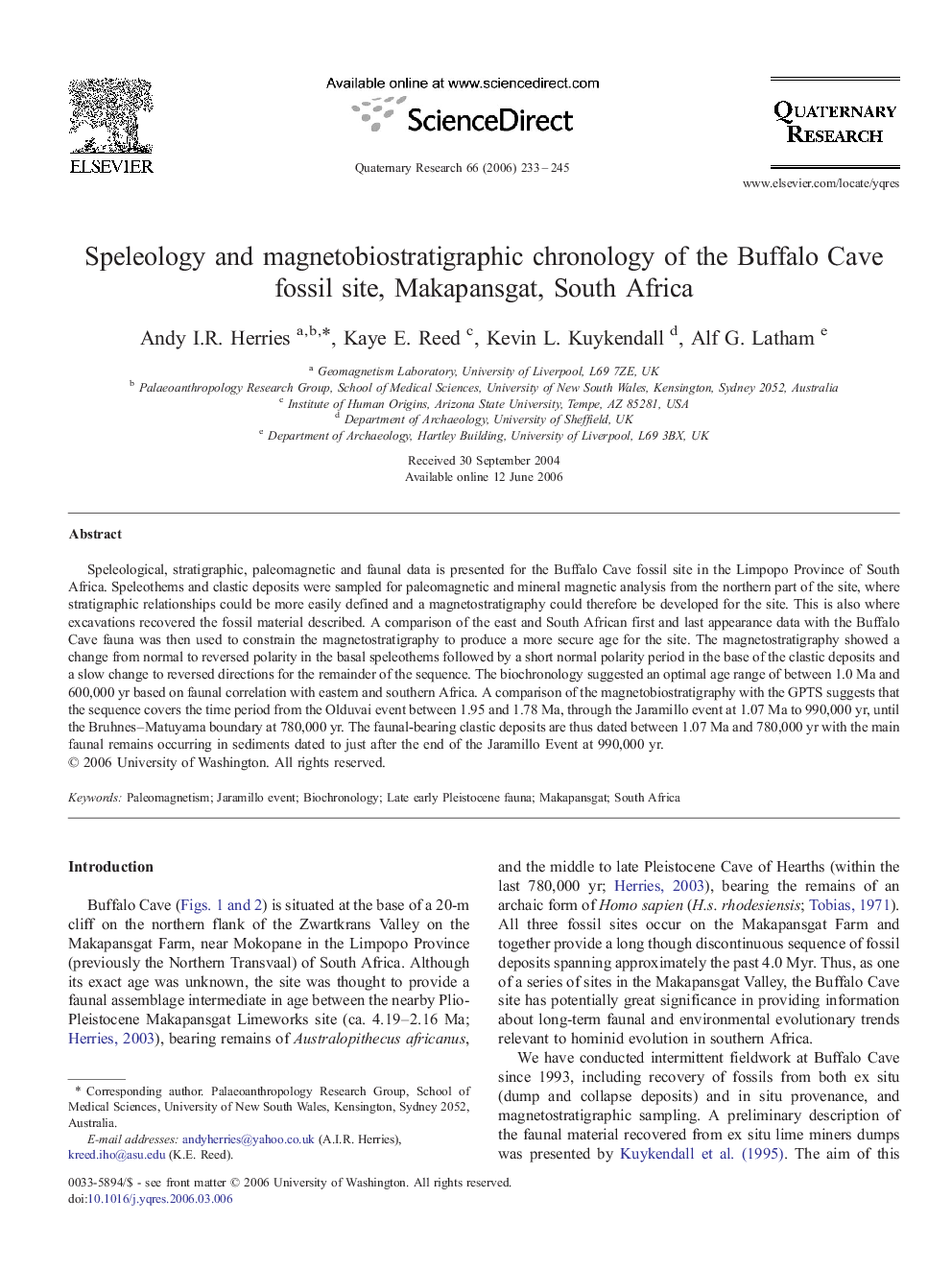| Article ID | Journal | Published Year | Pages | File Type |
|---|---|---|---|---|
| 1046135 | Quaternary Research | 2006 | 13 Pages |
Speleological, stratigraphic, paleomagnetic and faunal data is presented for the Buffalo Cave fossil site in the Limpopo Province of South Africa. Speleothems and clastic deposits were sampled for paleomagnetic and mineral magnetic analysis from the northern part of the site, where stratigraphic relationships could be more easily defined and a magnetostratigraphy could therefore be developed for the site. This is also where excavations recovered the fossil material described. A comparison of the east and South African first and last appearance data with the Buffalo Cave fauna was then used to constrain the magnetostratigraphy to produce a more secure age for the site. The magnetostratigraphy showed a change from normal to reversed polarity in the basal speleothems followed by a short normal polarity period in the base of the clastic deposits and a slow change to reversed directions for the remainder of the sequence. The biochronology suggested an optimal age range of between 1.0 Ma and 600,000 yr based on faunal correlation with eastern and southern Africa. A comparison of the magnetobiostratigraphy with the GPTS suggests that the sequence covers the time period from the Olduvai event between 1.95 and 1.78 Ma, through the Jaramillo event at 1.07 Ma to 990,000 yr, until the Bruhnes–Matuyama boundary at 780,000 yr. The faunal-bearing clastic deposits are thus dated between 1.07 Ma and 780,000 yr with the main faunal remains occurring in sediments dated to just after the end of the Jaramillo Event at 990,000 yr.
